What can immediately remind you of the taste of Tết?
Let’s join Everest Education (“E2”) to find that taste through these traditional dishes on the Tết banquet table!
This will give you some ideas using these vocabularies to introduce Tết to your international friends.
What is your favorite Tết dish? Don’t forget to share with us by commenting below!
Bánh chưng or Square sticky rice cake – Chung cake – Savory sticky rice cake is a traditional Vietnamese rice cake made from glutinous rice, mung beans, pork and other ingredients. Its origin is told by the legend of Lang Liêu, a prince of the last king of the Sixth Hùng Dynasty, who became the successor thanks to his creation of Bánh Chưng and Bánh Giầy, which symbolized, respectively, the earth and the sky.
Bánh tét or Cylindrical glutinous rice cake is a Vietnamese savory but a sometimes sweetened cake made primarily from glutinous rice, rolled in a banana leaf into a thick, log-like cylindrical shape, with mung bean and pork filling, then boiled. The “tét” in the food’s name literally means “sliced” or “split,” possibly referring to the fact that it is served in slices.
Chả giò or (Fried) spring roll is a popular dish in Vietnamese cuisine. The main structure of a roll is commonly seasoned ground meat (pork or crab, shrimp, chicken, and sometimes snails (in northern Vietnam), and tofu (for vegetarian roll)), mushrooms, noodles, and diced vegetables such as carrots, kohlrabi and jicama, rolled up in a sheet of moist rice paper. The roll is then deep-fried until the rice paper coat turns crispy and golden brown.
Chả lụa or Lean pork pie or Vietnamese Salami, Vietnamese Ham, Vietnamese Pork Sausage, Lean pork pie, Pork paste, Pork Pate in Banana Leaf is the most common type of sausage in Vietnamese cuisine, made of pork and traditionally wrapped in banana leaves into a cylindrical shape and boiled.
Nem chua or Fermented pork is a sweet, sour, salty and spicy fermented pork or beef sausage, usually served with a thin slice of garlic, bird’s eye chili and gooseberry tree leaf, usually rolled or cut in bite sizes.
Thịt đông or Jellied meat or Pork jelly is a typical dish of Northern Vietnam. It is an aspic made from pork, but mainly pig’s trotters, wood ear mushroom and pepper, in addition to pork skin, and may have jelly.
Where learning meets joy
with friends and teachers who care
Thịt kho hột vịt (nước dừa) or Braised pork belly and eggs (in coconut juice) or Caramelized pork and eggs is a Vietnamese dish traditionally consisting of small pieces of marinated pork (usually bacon, or meat with both lean and fat) and boiled eggs braised in coconut juice. Spices used include pepper, fish sauce, chili, sugar, etc.
Canh khổ qua nhồi thịt or Stuffed bitter melon soup is a typical dish in Tết of the Southern people, with the meaning that the bad luck in the old year will pass and good things will come in the new year. Its main ingredient is bitter melon. Most of the stuffed ingredients are pork or fish and some condiments, such as soy sauce, pepper, or salt.
Lạp xưởng or Chinese sausage and Củ kiệu ngâm or Pickled small leeks is a popular duo every Tet. The origin of Lạp xưởng is from China and came to Vietnam for a long time. Lạp xưởng is a typical Tet dish of Vietnamese people. Pure Vietnamese Lạp xưởng taste is hard to replace. Combining meat, garlic, pepper, spices and simply made not sophisticatedly, Lạp xưởng becomes a unique dish in Vietnamese culinary culture.
When talking about Pickled small leeks, Vietnamese people think about Tết. Pickled small leeks dish is indispensable in the Southern’s Tet banquet. People use small leeks to wash and soak them with sugar and vinegar to make a crunchy, sweet and sour dish. It is usually used with many other Tet dishes such as bánh chưng, bánh tét, lạp xưởng …
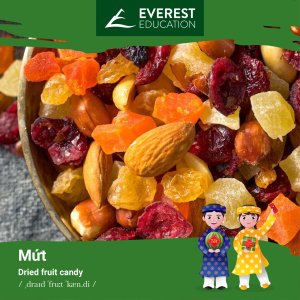 Finally, when it comes to Tet food, we can’t help but mention the 3 Khô bò or Beef Jerky, Hạt dưa or Red roasted watermelon seeds and many kinds of Mứt or Dried fruit candy. Vietnamese people use these dishes to pass the time when playing Tết games. This set of 3 is the most “wanted” Tet dishes for children (and even adults).
Finally, when it comes to Tet food, we can’t help but mention the 3 Khô bò or Beef Jerky, Hạt dưa or Red roasted watermelon seeds and many kinds of Mứt or Dried fruit candy. Vietnamese people use these dishes to pass the time when playing Tết games. This set of 3 is the most “wanted” Tet dishes for children (and even adults).
___
reference: wiki
#keeponlearning #keeponlearningwithE2
Where learning meets joy
with friends and teachers who care


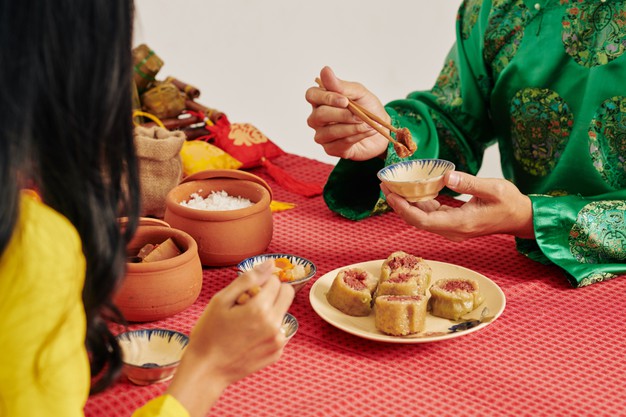
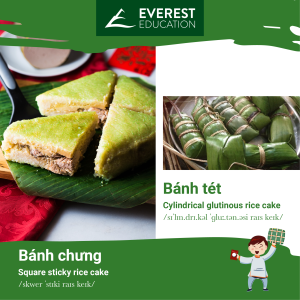
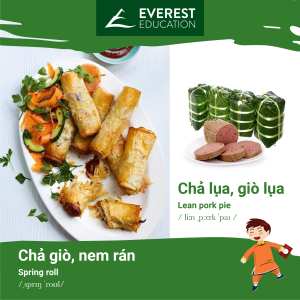
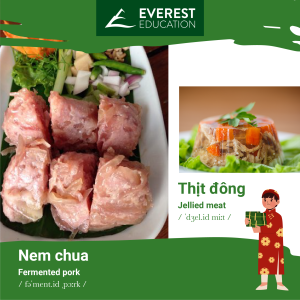






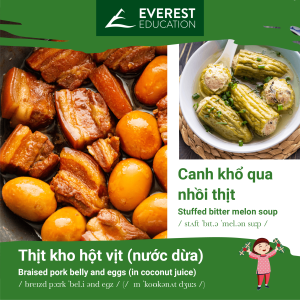
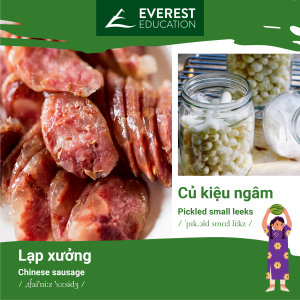
 Finally, when it comes to Tet food, we can’t help but mention the 3 Khô bò or Beef Jerky, Hạt dưa or Red roasted watermelon seeds and many kinds of Mứt or Dried fruit candy. Vietnamese people use these dishes to pass the time when playing Tết games. This set of 3 is the most “wanted” Tet dishes for children (and even adults).
Finally, when it comes to Tet food, we can’t help but mention the 3 Khô bò or Beef Jerky, Hạt dưa or Red roasted watermelon seeds and many kinds of Mứt or Dried fruit candy. Vietnamese people use these dishes to pass the time when playing Tết games. This set of 3 is the most “wanted” Tet dishes for children (and even adults).







